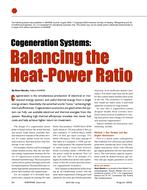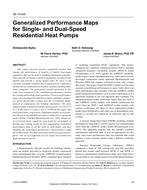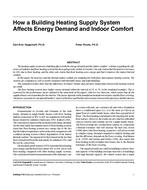High-performance buildings are becoming more prevalentin new Army construction projects. Unfortunately, thesenew designs often do not take into account preventive proceduresto avoid thermal bridging effects, which are localizedheat flow between the building interior and exterior. Theseeffects become much more significant as buildings aredesigned to be highly insulated and better sealed against airleakage. Researchers from the U.S. Army Engineer Researchand Development Center—Construction EngineeringResearch Laboratory (ERDC-CERL) visited several Armyinstallations and used infrared imaging to survey buildings toidentify places in the building envelope where thermal bridgingcommonly occurs. Characteristic construction sectionswere selected for heat transfer modeling to quantify and qualifythe thermal bridging impact and develop general mitigationsolutions. This manuscript presents examples of the developedU.S. Army ERDC-CERL Thermal Bridge Mitigation Catalog,which includes architectural details thermal bridge modelingvalues (?-values and U-factors), and schematics of goodconstruction practices to improve the building envelopeperformance of typical Army facilities. In addition, this workhighlights specific and simple-to-follow mitigation strategiesplus visual step-by-step sequencing examples to be used by theconstruction practitioner for the assembly of a properly mitigatedthermal bridge detail in the building envelope.
Citation: 2016 Winter Conference, Orlando, FL, Transactions 2016, Vol 122 pt. 1
Product Details
- Published:
- 2016
- Number of Pages:
- 15
- Units of Measure:
- Dual
- File Size:
- 1 file , 8 MB
- Product Code(s):
- D-OR-16-024


